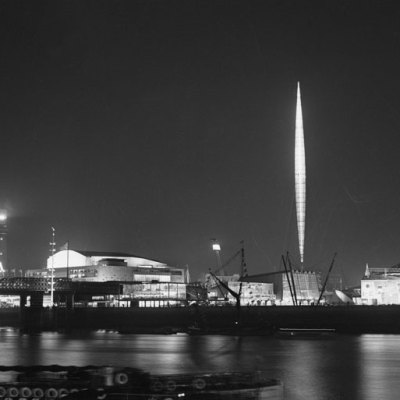From the December 2015 issue of Apollo. Preview and subscribe here.
A pair of enduring themes arose from Giorgio Vasari’s biography of Andrea del Sarto (1486–1530): his character was weak and deficient, but his art was almost without error (‘senza errore’). This two-pronged judgement was later distilled by Heinrich Wölfflin, who curiously declared that although Andrea was ‘among the talents of the highest order, he is the only one who seems to have had a defect in his moral constitution’. Recent scholarship has unravelled these improbably conjoined tropes, revising Vasari’s indictment of Andrea as spineless, and probing in nuanced ways – and with the benefit of scientific technology – his artistic practice and the methods behind his extraordinary achievements as a draughtsman and painter. This engrossing exhibition of Andrea del Sarto’s drawings and its handsome catalogue are the most recent contributions in a critical rehabilitation that has been underway for the past half century.
The exhibition presents 45 of the artist’s roughly 180 extant drawings. (Six additional sheets were shown at its first venue at the J. Paul Getty Museum, while the display in New York includes three drawings not seen in Los Angeles.) What survives is a mere fraction of a graphic corpus that originally numbered many hundreds, if not thousands of sheets. Already not long after Andrea’s death a grievous fate befell his drawings when his hapless pupil Domenico Conti was robbed of everything he had inherited from the master. The culprits were reputed to be fellow painters, which suggests motives other than base thuggery; herein, perhaps, lies the beginning of the hagiography, fuelled by the Medici who voraciously accumulated his paintings and drawings, which elevated Andrea to the pinnacle of the Florentine canon. Does this early mishap account for the virtual absence of cartoons, the existence of which is attested by Vasari and confirmed by technical evidence, and, more puzzling, the scarcity of pen-and-ink drawings from his hand? Were certain kinds of drawings ephemeral – ruined, carelessly handled, or discarded after use – and others more carefully conserved because they were deemed to have an enduring value and utility in the workshop?
‘Study of a Woman’, c. 1517–25, Andrea del Sarto (1486–1530). Gabinetto Disegni e Stampe, Gelleria degli Uffizi, Florence

Some accident of survival surely intervened for, as encountered in the intimate lower level galleries and the elegant Oval Room at the Frick, Andrea worked exclusively in chalk. (This is belied by only one drawing on view, the exceptional Madonna and Child with Four Saints of c. 1509, executed in brown wash with white heightening). Judging from his surviving graphic corpus, comprised almost entirely of studies of heads and hands (Leonardo’s two expressive conveyors of moti mentali, or ‘motions of the mind’), figures and draperies, he was a draughtsman of great facility but he commanded a more limited repertoire than his contemporaries. This, too, is reflected in the exhibition, which includes relatively few composition studies and almost no primi pensieri recording the first spark of an idea. These are unlikely deficits for a gifted Florentine artist sharing the stratosphere with the versatile Leonardo, Michelangelo, Raphael, and Fra Bartolommeo. It is difficult to resist the supposition that the surviving record of Andrea as a draughtsman, while glorious, is incomplete.
If chalk was his chosen medium, Andrea fully exploited its possibilities. The naturalism that is a hallmark of his style must underlie the privileging of red chalk, a medium ideally suited to describing warm, breathing flesh. With their astonishing tonal and colouristic range, his red chalk drawings also hint at the sublime and subtle gifts as a colourist that dazzle in his paintings. The more pictorial passages resulted from wetting the chalk to create soft, supple contour lines, and deftly allowing the reserve of the paper to suggest highlights and relief. For the latter, Andrea’s contemporaries often employed white heightening, though he, conspicuously, almost never did: paper and chalk were sufficient implements for this consummate draughtsman. That red chalk was the quintessential Florentine graphic medium in the cinquecento was in no small part owing to his masterful efforts, which influenced not only his pupils and immediate followers such as Pontormo, Bandinelli, and Salviati, but later 16th-century artists like Naldini as well.
Red chalk drawings by Andrea del Sarto far outnumber those in black chalk, but what is striking in his practice is their interchangeability. There are head, drapery, and figure studies in both black and red chalk, and it is not always self-evident why one was chosen over the other. If the preference was tied to chronology – John Shearman believed that black chalk head-studies were mostly a product of Sarto’s late career – the eschewal of a conventional chronological hang at the Frick obfuscates this. Perhaps black chalk (a more erasable or correctable medium, though Andrea seldom availed himself of that property) was used for the Head of a Man Looking Up (c. 1527) in order to approximate the cool tonality of the ancient marble Laocoön that inspired it, and for the beautiful study for the head of the Virgin in The Madonna of the Harpies (1517) because the figure in the painting, as Vasari said, was suffused in ‘a smoke of transparent clouds’.
Sometimes the choice may even have been a simple matter of his reaching for whichever lay closest at hand, knowing he could achieve the same desired ends with both. Red and black chalk are occasionally used on the same sheet, but in isolation, never in combination. In fact, he seems steadfastly to have stopped short of formulating a true ‘à deux crayons’ technique such as Federico Zuccaro later employed. (The imposing Study for the Head of St Joseph, of c. 1523–24, is anomalous; as is often suggested, the tentative red chalk denoting flesh may have been added later.) Only in his rare composition drawings did Andrea seem to favour red chalk exclusively over black. The virtual absence from his graphic oeuvre of pen-and-ink, which allows for a searching, fluid exploration of ideas, is particularly surprising here, though in his hand red chalk was imbued with an extraordinary inventive freedom.
Most of the drawings in the exhibition are connected with known commissions but some puzzles remain. The unidentified implement in the accomplished study of two hands of c. 1527 may be an iron comb, attribute of St Blaise. Another question is the identity of the sitter in the National Gallery’s Portrait of a Young Man (c. 1517–18), who looks up from his book as though interrupted by the viewer. Whoever he is, the work belongs to the tradition of friendship portraits. Raphael and Pontormo both painted double portraits of friends, and in a witty conceit Andrea here in a sense may have done so, too, his curiously prominent monogram standing in for the absent artist himself, who departed for France at the time the work was painted.
Like most artists of his generation Andrea was a utilitarian draughtsman. Drawings were steps in a creative process culminating in frescoes, altarpieces, devotional images and portraits. Comprehending that process requires that they be seen with the finished work. This felicitously occurs in the upstairs gallery, where three paintings are exhibited with related preparatory studies, making the regrettable absence of comparative illustrations in the lower level galleries more acute. The lone exception, an image of the Prado’s Madonna of the Steps (c. 1522), which could not travel, anchors a rich display of preparatory studies for the picture that together offer an instructive view of Sarto’s artistic process. As with chronology, this organising principle is otherwise abandoned, however. (Sheets relating to a single project, such as the San Salvi Last Supper, are scattered throughout the exhibition.) Instead, following the catalogue, drawings are clustered according to type or category, regardless of date or function. If this framework conveys little sense of Andrea’s stylistic evolution or the process attached to specific commissions, it underscores the consistency of his practice and approach throughout his entire career.
The exhibition’s subtitle is not a description of its content: there are no drawings by members of the workshop, who are present only as garzoni-cum-models in figure drawings, and little consideration of the role that drawing served in Andrea’s pedagogy or delegation of labour. Rather, it is a corrective to Vasari’s disgruntled portrayal of the artist and his bottega. That this was a dynamic, productive and efficient incubator populated by a range of talents, great and slight, there can be no doubt. Here, though, the spotlight falls on the master alone, the industrious, flawless painter for whom drawing was the essential foundation. What he drew, he drew to perfection, seldom making a mistake or changing his mind, if the rare pentimenti seen in his drawings are an indicator. As a draughtsman and painter alike, Andrea del Sarto was senza errore.
‘Andrea del Sarto: The Renaissance Workshop in Action’ is at the Frick Collection, New York until 10 January 2016.
From the December 2015 issue of Apollo. Preview and subscribe here.






